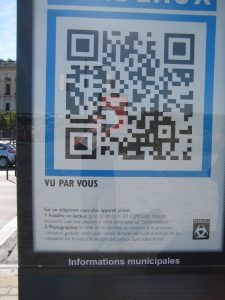I crawled through the nooks and crannies of the UK and France over the past two weeks and while I enjoyed my share of fine food, history, art and monuments, my mind was never far from looking at the marketing spin on things. That’s just the way I am : ) Here are a few random things I picked up along the way:
Compared to my last trip a year ago, there appears to have been little progress using social media as a practical marketing tool, at least on a retail level. While nearly every hotel, restaurant and pub in the U.S. is building an online following, I saw zero evidence that this is being embraced across the pond, and believe me I looked! I did pick up some Foursquare activity along the way but typically I was the first person to check in at any given location. Would love to have some of the European {grow} community members weigh in on this topic. What’s going on?
I’ve always thought one of the hurdles to adoption in Europe is the relatively low availability of free Wi-Fi. In fact, at one hotel, I was charged five euros (about $6) for 15 minutes of Internet time.
I did get to meet some high-profile bloggers on my trip (video interviews forthcoming!) and they indicated that even blogging may be on the decline in the region. They described Twitter as something only being adopted by geeks, not businesses.

At first I was
I have always loved the way Coca-Cola has leveraged the shape of its iconic bottle as an integral part of the brand. I had the pleasure of working on several projects with Coke and they used to tell me with pride that they were the only brand that could be identified by the sense of touch in a dark refrigerator.
All over France cafes identified that they were carrying Coca-Cola products simply through a graphic on their storefront windows. I just think this is totally awesome. Such marketing genius at Coke.

While some European countries may lag in social applications, I found it interesting that the city of Bordeaux is posting QR Codes in posters along bus routes to promote tourism and special events. By using a smart phone equipped with the correct reader application, somebody can scan the image to display text, contact information, or a web page. Using QR Codes as a promotional tool is a relatively new idea so I thought this innovation was noteworthy.
One lasting impression from my trip was how airlines — and airports — remain so out of touch with human needs. An example. We had paid for our international flight on American Airlines months in advance. When we arrived at the airport, I was issued all of my tickets, but inexplicably my wife was not and had to check in at each connection. This forced us to re-negotiate seats together at each stage of the trip. In Chicago, there was nobody at our gate to process the request so we went to the next gate, where there was a woman standing idly. We asked her to help and she refused, explaining that we would have to wait for our gate attendant to arrive. When I pressed her for a reason why she couldn’t fulfill this minor request, she reluctantly complied. This employee, and so many others, seem programmed to be un-helpful. It is beyond me how this last bastion of customer arrogance persists among U.S. airlines.

Well, it’s good to be back and typing again. A big thank you to all the awesome community members who pitched in with guest blogs during my absence!



